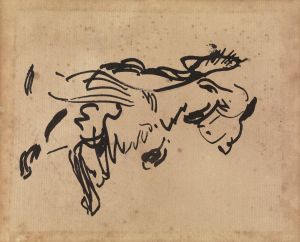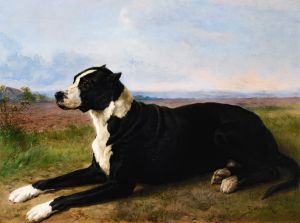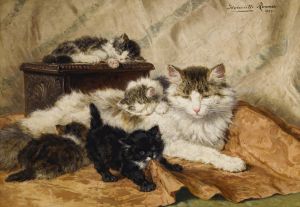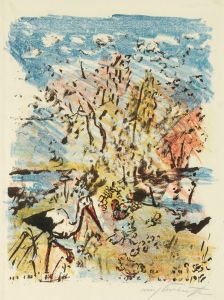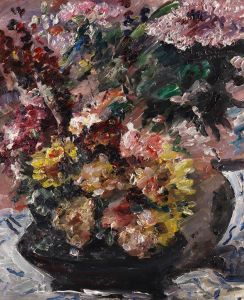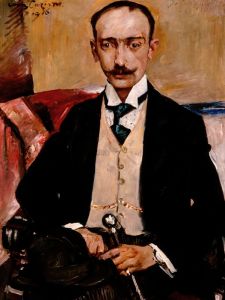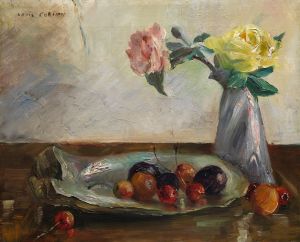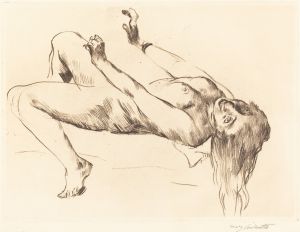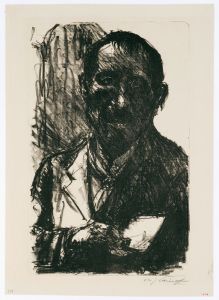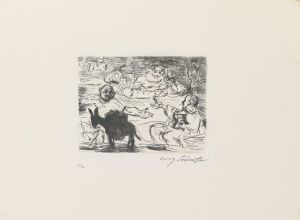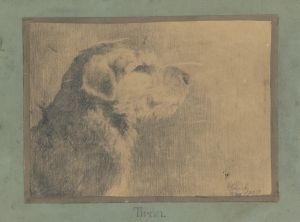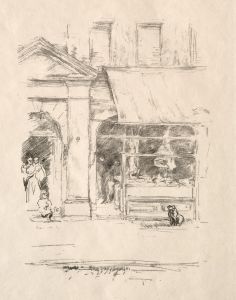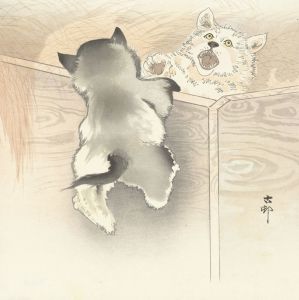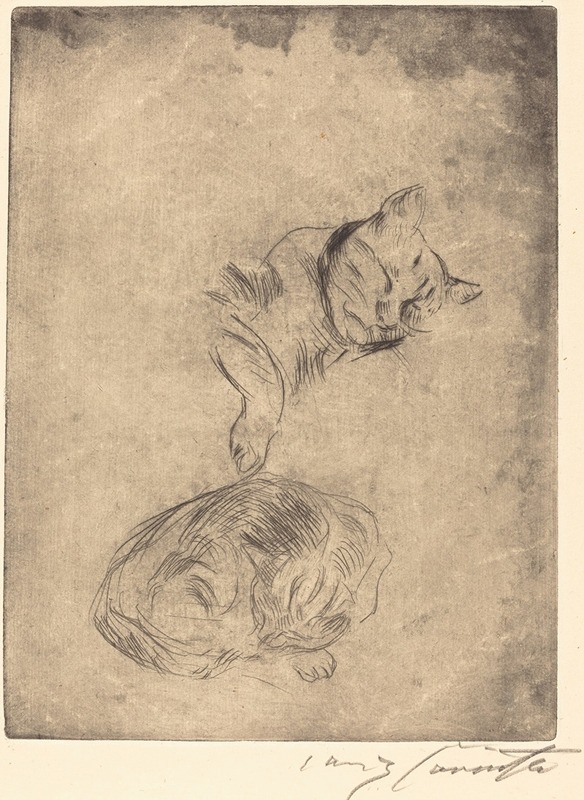
Cats
A hand-painted replica of Lovis Corinth’s masterpiece Cats, meticulously crafted by professional artists to capture the true essence of the original. Each piece is created with museum-quality canvas and rare mineral pigments, carefully painted by experienced artists with delicate brushstrokes and rich, layered colors to perfectly recreate the texture of the original artwork. Unlike machine-printed reproductions, this hand-painted version brings the painting to life, infused with the artist’s emotions and skill in every stroke. Whether for personal collection or home decoration, it instantly elevates the artistic atmosphere of any space.
Lovis Corinth, a prominent German painter and printmaker, created the artwork "Cats" in 1909. Corinth was a leading figure in the German art scene during the late 19th and early 20th centuries, known for his dynamic brushwork and vibrant use of color. His work often bridged the gap between Impressionism and Expressionism, and he was a member of the Berlin Secession, an art movement that sought to break away from traditional academic art.
The painting "Cats" (German: "Katzen") is a notable example of Corinth's ability to capture the essence of his subjects with a lively and expressive style. The artwork depicts a group of cats, rendered with a sense of movement and spontaneity that characterizes much of Corinth's work. The cats are shown in various poses, some lounging and others appearing more alert, which conveys a sense of naturalism and immediacy.
Corinth's use of color in "Cats" is particularly striking. He employs a rich palette, with bold and contrasting hues that bring the scene to life. The brushstrokes are loose and fluid, giving the painting a sense of energy and vitality. This technique is indicative of Corinth's mature style, where he often combined a robust, almost sculptural approach to form with a keen sensitivity to the effects of light and color.
The painting reflects Corinth's interest in everyday subjects and his ability to find beauty in the ordinary. Cats, as a subject, allowed him to explore the interplay of light and shadow on fur, as well as the graceful and sometimes playful movements of the animals. This focus on the mundane yet intimate aspects of life is a recurring theme in Corinth's oeuvre.
Lovis Corinth's career was marked by both personal and professional challenges. He suffered a stroke in 1911, which affected his ability to paint. However, he continued to work and adapt his style, demonstrating resilience and dedication to his art. His later works, including those created after his stroke, often exhibit a more introspective and emotional quality.
"Cats" remains an important piece within Corinth's body of work, exemplifying his skill in capturing the essence of his subjects with both technical proficiency and emotional depth. The painting is housed in the collection of the National Gallery in Berlin, where it continues to be appreciated by art enthusiasts and scholars alike.
Lovis Corinth's contribution to the art world extends beyond his paintings. He was also a respected teacher and writer, influencing a generation of artists through his work and his involvement in the art community. His legacy is preserved in numerous museums and collections around the world, and his paintings, including "Cats," continue to be celebrated for their dynamic energy and expressive power.





